 
(Empty Piazza di Spagna)
|
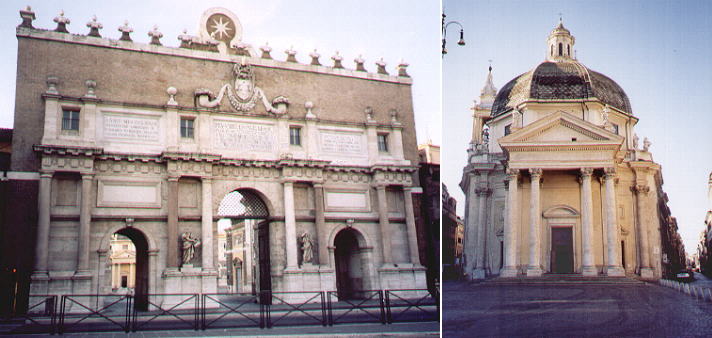 | ||
Porta del Popolo is open but no one goes through it. The vast oval of Piazza del Popolo is completely empty: S. Maria dei Miracoli is open, but the beggar is not at his place, nor the police van is parked next to the church portico as it usually is.
The few Romans who are at home prefer to oversleep while the tourists will not show up until 9:00.
It is a unique opportunity to walk through a very different Rome.
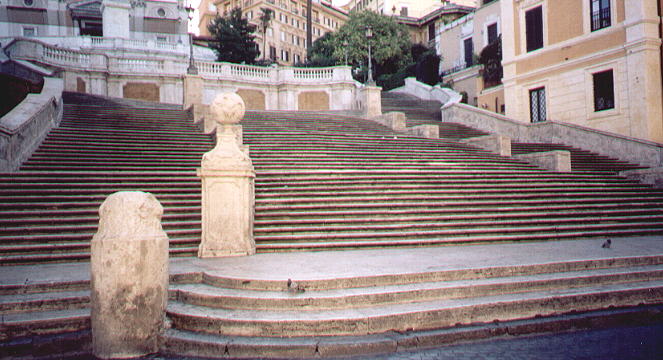 | ||
Since they were built in the XVIIIth century the Spanish Steps have always been crowded with people. They immediately became very popular with the foreigners who lived in Rome and through them with the foreigners who visited Rome. Today they are a meeting point for the young and until very late at night the steps are filled with people who are not yet willing to go to bed.
To see them with no one in sight is a bit like imagining what will be seen by the rats or the ants or whichever species will rule earth after mankind will have eventually succeeded in destroying itself.
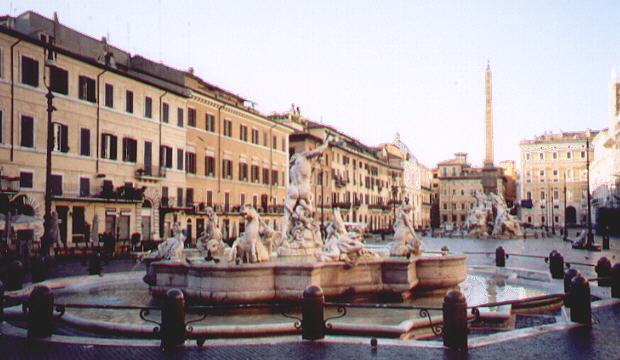 | ||
Baroque sculptures were meant to attract the attention of the passers-by. Without anyone admiring them their theatrical gestures seem senseless. In the past Piazza Navona was very crowded at Ferragosto. Pope Innocentius XI (1676-89) established that on this day the pipes discharging the waters of the fountains should be blocked, so that the fountains overflowed and Piazza Navona became a sort of pool. Here the rich and the poor mixed together playing all sorts of jokes with the only objective of refreshing themselves.
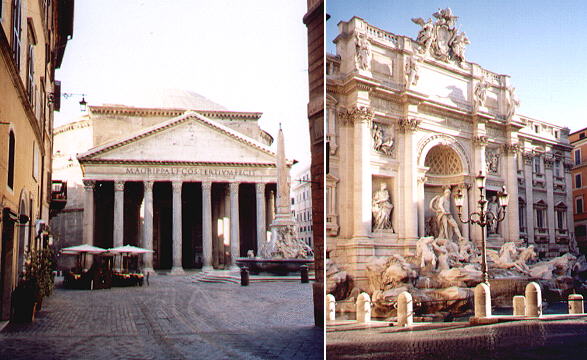 | ||
Some of the landmarks of Rome can be seen at a distance as both the papal and the Italian government opened large streets leading to them. Other monuments instead come as a surprise; a very popular song describes this sudden emotion.
...t'imbevi de Fori e de scavi,
poi tutt'ad un tratto,
te trovi Fontana de' Trevi,
ch'è tutta per te!
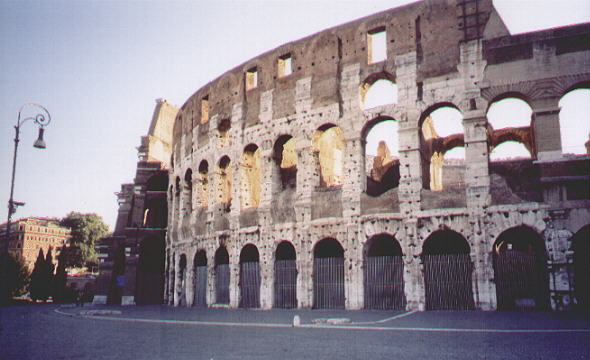 | ||
Most of the writers of the XVIIIth and XIXth century have described their reactions at the view of this symbol of Ancient Rome. Some cried, some recited pages of Titus Livius, some pondered on the destiny of mankind, all (at least in their accounts) let their readers believe they had been very impressed by these gigantic ruins.
Today, it is not so easy to concentrate on a thought, as the Colosseo is visited by crowds which often surpass those who gathered there to see the gladiators. Ferragosto offers a chance for early birds to check if their reactions are similar to those of the travellers of the past.
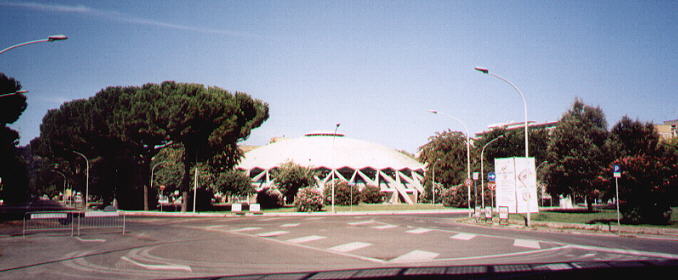 | ||
While after 9:00 central Rome gets gradually populated by tourists, in the other parts of the city it is difficult to meet a single person during the whole day. It is a unique opportunity to stand at the center of a usually heavily trafficked road to take a picture from the most appropriate point.
 or to
The Coats of Arms of the Popes or
to My Home Page on Baroque Rome or to
My Home Page on Rome in the footsteps of an XVIIIth century traveller
or to
The Coats of Arms of the Popes or
to My Home Page on Baroque Rome or to
My Home Page on Rome in the footsteps of an XVIIIth century traveller
All images © 1999 - 2004 by Roberto Piperno. Write to romapip@quipo.it
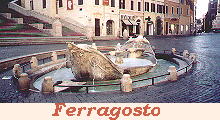 Ferragosto in Rome
Ferragosto in Rome